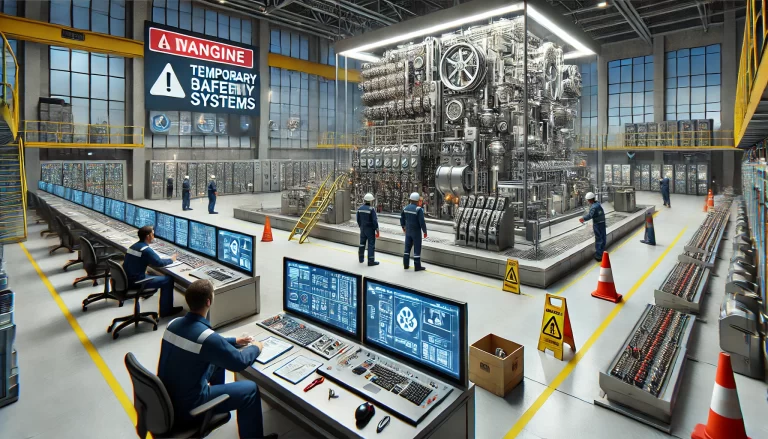In industrial automation and process control, the correct wiring and commissioning of instruments is essential to ensure reliable system performance and precise measurements. This guide focuses on best practices and key considerations for the installation, wiring, and debugging of commonly used instruments in chemical industries, including temperature sensors, pressure transmitters, flow meters, and level detectors.

1. Core Wiring Techniques for Common Instruments
1.1 Temperature Measurement Instruments
Thermocouples:
Ensure accurate polarity: typically, red is the positive terminal.
Use matching thermocouple extension or compensation wires based on thermocouple type.
Avoid routing signal cables parallel to power lines to minimize electromagnetic interference.
RTDs (e.g., PT100):
Prefer three-wire or four-wire configurations to improve accuracy.
In three-wire mode, one wire carries the signal and two serve for resistance compensation.
In four-wire setups, the lead resistance effect is fully eliminated.
All connections should be securely fastened to avoid fluctuating readings.
1.2 Pressure Transmitters
Two-wire systems:
Supply and signal share the same pair of wires (typically 24V DC).
Ensure the loop load resistance stays within specified limits, typically not exceeding 250 Ω.
Four-wire systems:
Power and signal lines are separated.
Power supply can be 220V AC or 24V DC.
Use shielded cables and ensure proper grounding to reduce noise interference.
1.3 Flow Meters
Electromagnetic Flow Meters:
Use dedicated shielded cables between sensor and transmitter.
Ensure full pipe conditions during measurement.
Proper grounding is critical to suppress electrical noise.
Vortex/Turbine Flow Meters:
Connect pulse output to the corresponding frequency acquisition module.
Identify the correct output signal type (NPN or PNP).
Use vibration-damping brackets if necessary.
1.4 Level Measurement Devices
Radar/Ultrasonic Level Sensors:
Use shielded cables and keep them away from high-interference equipment like inverters.
Install sensors away from obstacles such as agitators or internal piping.
Float Level Switches:
Dry contact outputs should be connected to relay or PLC inputs.
Verify that the contact load matches the controller’s specifications.
1.5 General Wiring Rules
Always use shielded signal cables.
Ground shields at one end only, usually on the control cabinet side.
Ensure a single-point grounding system to avoid ground loops.
Keep ground resistance below 4 Ω.
Confirm instrument voltage (24V or 220V) before wiring.
Use crimp terminals or solder joints to prevent loose connections.

2. Standardized Commissioning Procedure
2.1 Pre-Commissioning Checklist
Safety First: Always wire instruments with the power off. Ensure explosion-proof requirements are met in hazardous areas.
Parameter Verification: Confirm instrument range, units, and signal type (e.g., 4-20mA, 0-10V, Modbus).
2.2 Step-by-Step Commissioning
Power-On Check:
Monitor supply current and voltage.
Observe indicator lights or displays.
Measure analog outputs (current or voltage) using a multimeter.
Zero and Span Calibration:
Zero: Apply zero input (e.g., vent pressure sensor to atmosphere), and adjust output to 4mA or 0%.
Span: Apply full input and adjust output to 20mA or 100%.
For smart instruments, use HART communicators or handheld calibrators.
Dynamic Testing:
Simulate process variations (e.g., temperature rise, pressure change).
Observe system response for linearity and stability.
Verify alarms and interlocks function correctly.
2.3 Troubleshooting and Interference Mitigation
Signal Fluctuations:
Check grounding quality and shield integrity.
Install 0.1 µF filter capacitors in parallel with signal lines if needed.
Communication Errors (e.g., Modbus):
Verify baud rate, device address, parity settings.
Use an oscilloscope to check waveform integrity.

3. Common Failures and Remedies
No Output Signal: Confirm power supply, check for open circuits, and inspect sensor condition.
Large Measurement Deviation: Recalibrate; inspect for sensor damage (e.g., RTD breakage, pressure diaphragm deformation).
Signal Spikes or Drops: Check for loose wiring or nearby interference sources.
4. Safety and Maintenance Notes
Explosion-Proof Areas: Use intrinsically safe devices and follow certified wiring standards.
PPE Requirements: Always wear proper safety gear when working in high-pressure or high-temperature zones.
Documentation: Keep calibration reports, wiring diagrams, and configuration backups for future maintenance.
By adhering to standardized wiring practices and thorough commissioning procedures, engineers can significantly enhance the reliability and accuracy of measurement instruments in chemical plants. Stepwise testing and documentation ensure long-term performance and simplify future diagnostics and maintenance tasks.
